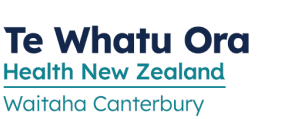What does it do?
Paracetamol and codeine is used to treat and prevent mild to moderate pain.
Before you start
- Tell your health professional if you have lung, bowel, liver, kidney or heart problems or have had a recent head injury.
- Tell your health professional if you are pregnant, planning to become pregnant, or breastfeeding.
How should you take it?
Take the tablets and capsules as directed with a glass of water.
Dissolve the effervescent tablets in water before taking.
What if you forget a dose?
Should an occasional dose be missed it need not be taken later.
Can you take other medicines?
Paracetamol and codeine are contained in a wide variety of pain relief and cough and cold medicines. Do not take other medicines that also contain paracetamol or codeine, unless you discuss this with a health professional.
Tell your pharmacist or doctor about all medicines or treatments that you may be taking including vitamins, herbal products (e.g. valerian) or recreational drugs.
What side effects might you notice?
| Side Effects | Recommended action |
|---|---|
|
Skin rash, skin peeling or blisters |
Stop taking and see your doctor immediately |
|
Constipation |
Tell your health professional |
|
Drowsiness |
Tell your health professional if troublesome |
|
Stomach upset |
Take with food |
If you notice any other effects, discuss them with your doctor or pharmacist.
Other information:
- Paracetamol and codeine can be taken regularly or when required. If paracetamol and codeine is not relieving your pain contact your health professional.
- Paracetamol and codeine can impair your ability to do tasks such as driving or using machines. Alcohol makes this worse. Discuss your risk with your health professional. (search NZTA - Are you safe to drive?)
- Do not take more than the stated dose (usually up to a maximum of 8 tablets/capsules in 24 hours for adults). Taking too much paracetamol can cause liver failure.
- Codeine may be addictive with long-term use.
This leaflet contains important, but not all, information about this medicine.
Prepared by the MyMedicines Committee at Christchurch Hospital, Te Whatu Ora - Waitaha, New Zealand. March 2023
For more general information about this sheet and its contents, see: What does a My Medicines sheet cover?
Te Reo Māori
Te Reo Māori information sheets supported by Health Quality and Safety Commission New Zealand
Web links for this sheet in different formats
Click on buttons to copy web addresses for this leaflet:
If your browser does not automatically copy these links use its copy command instead.
About My Medicines
My Medicines Patient Information Leaflets (PILs) contain important, but not all, information about the medicines they describe.
For more information about the sheets, see: What does a My Medicines sheet cover?
My Medicines is developed by a team at Te Whatu Ora – Waitaha. Our team is made up of doctors, pharmacists, and a non-medical person to help us keep to plain language. We also discuss our information with specialist health professionals or groups when needed

